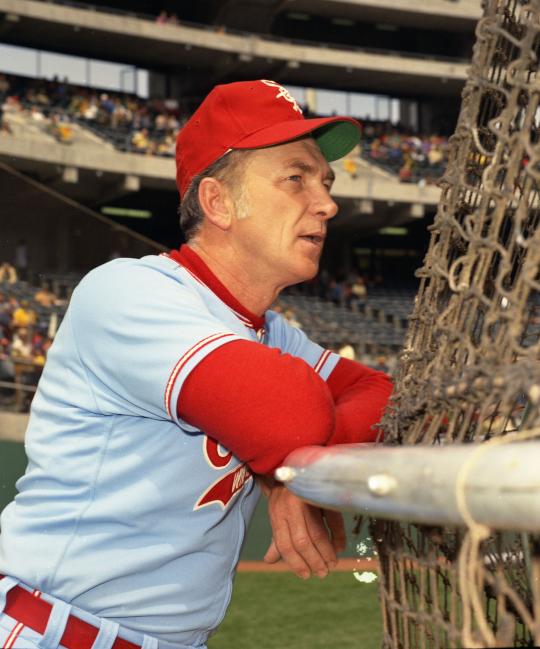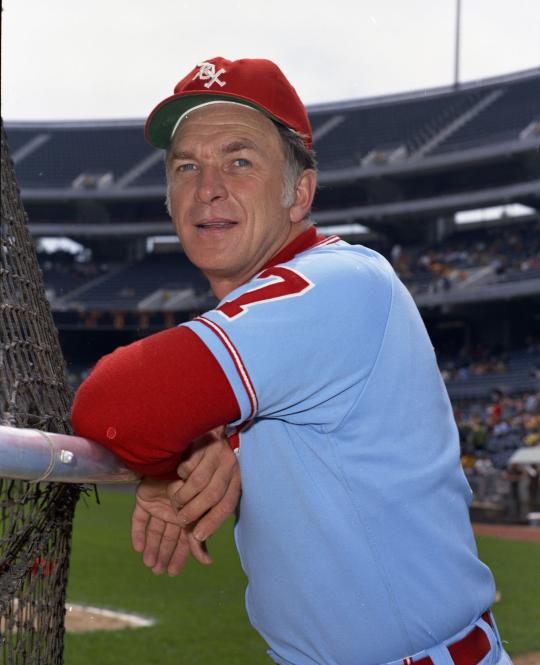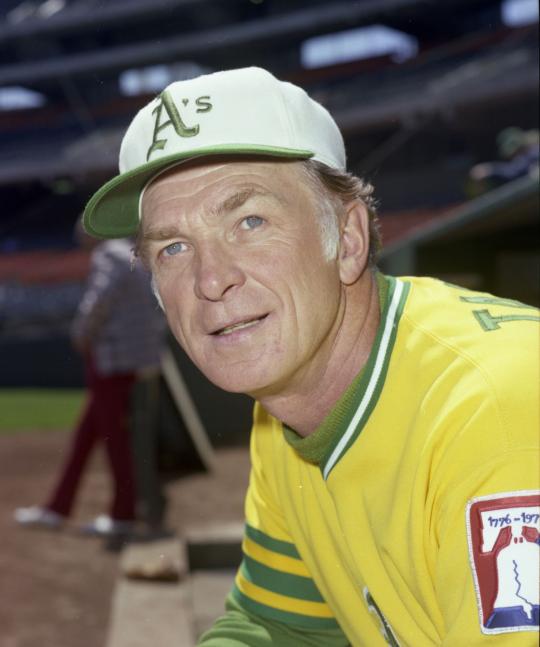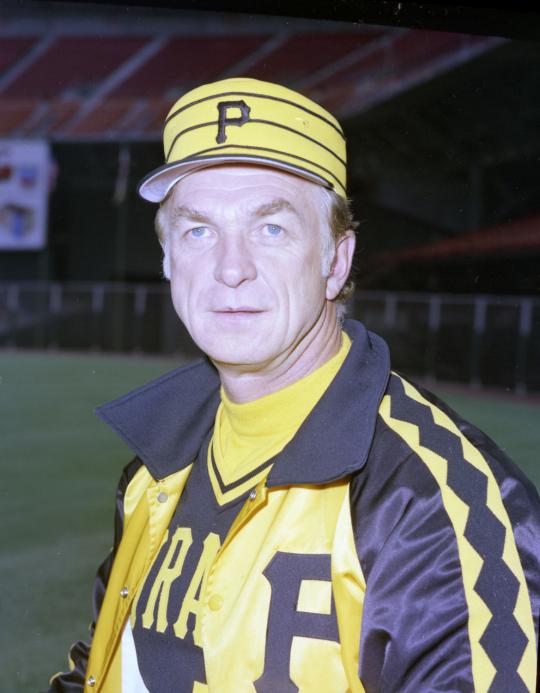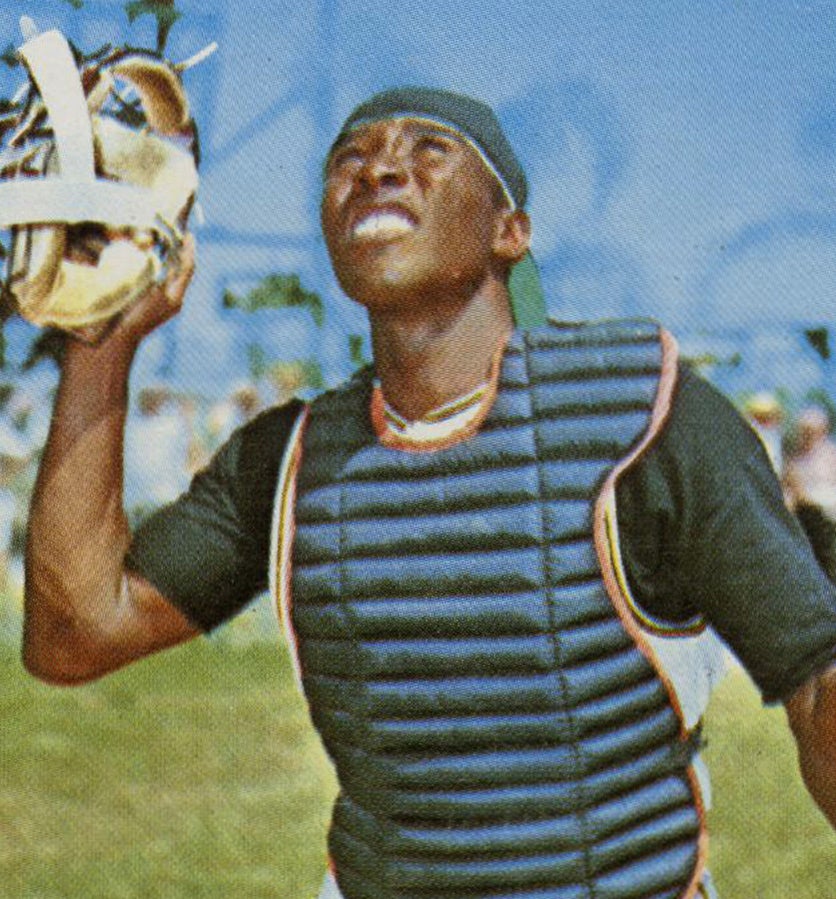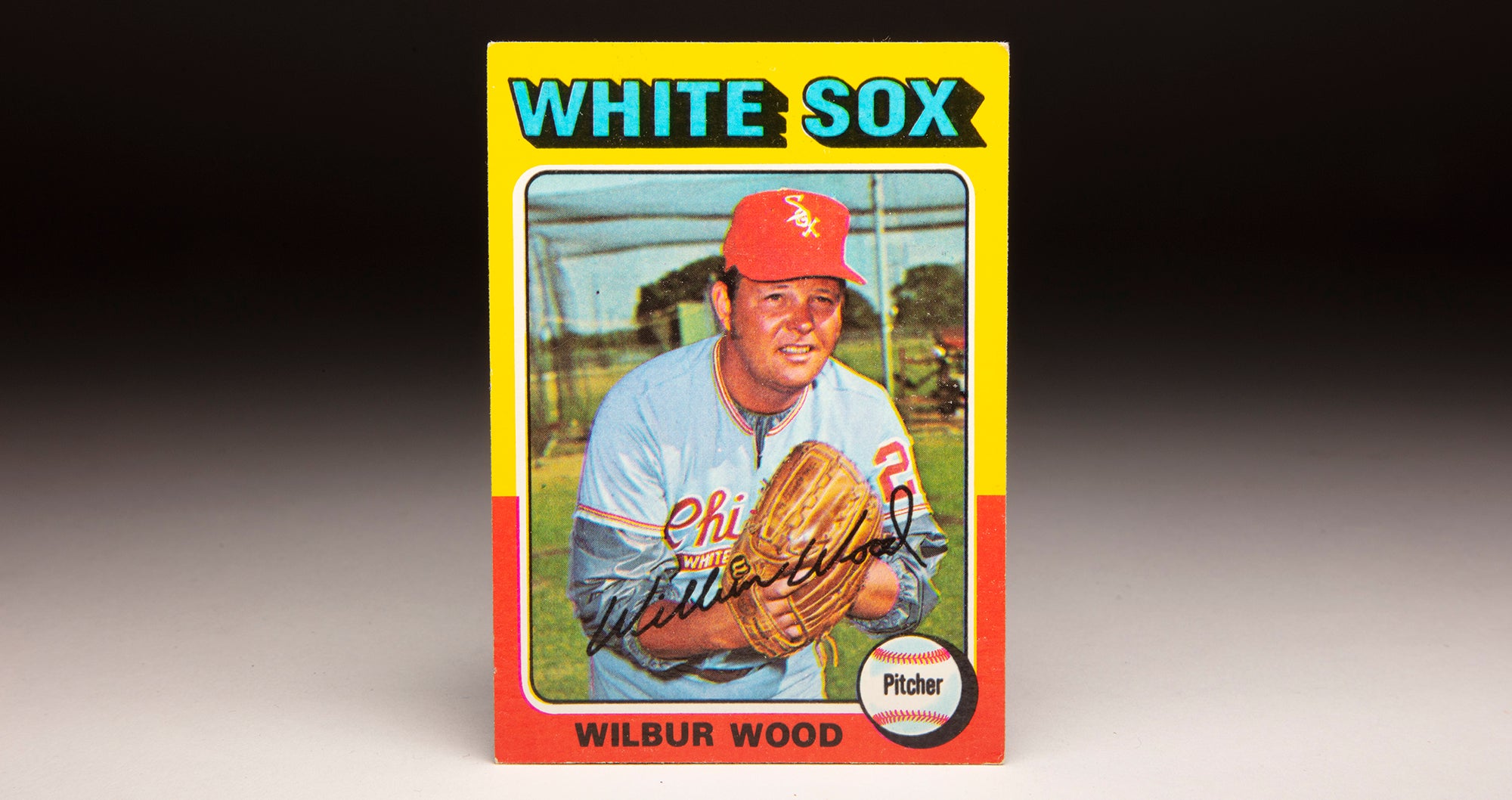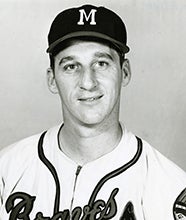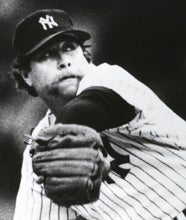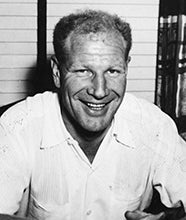- Home
- Our Stories
- #CardCorner: 1972 Topps Chuck Tanner
#CardCorner: 1972 Topps Chuck Tanner
On April 12, 1955, Chuck Tanner hit the first big league pitch he saw out of the ballpark.
It was the beginning of an MLB journey that saw Tanner ride his unrelenting optimism to the pinnacle of the game as one of the most successful managers of the 1970s.
Born July 4, 1928, in New Castle, Pa. – about an hour north of Pittsburgh – Tanner was the son of a railroader who played baseball from his earliest days. He signed with the Boston Braves in 1946 and slowly made his way through the minor leagues, topping the .300 mark every season from 1947-54. While playing with the Atlanta Crackers of the Double-A Southern Association in 1954, Tanner led the league with 192 hits and 311 total bases.
Hall of Fame Membership
There is no simpler, and more essential, way to demonstrate your support than to sign on as a Museum Member.
Official Hall of Fame Apparel
Proceeds from online store purchases help support our mission to preserve baseball history. Thank you!
The next season, at age 26, Tanner made the Braves’ Opening Day roster. In the first game of the season, he pinch-hit for Warren Spahn in the eighth inning and homered off the Reds’ Gerry Staley to tie the game at 2 – a game the Braves eventually won by a score of 4-2. Tanner was the seventh player in history to homer on the first pitch he saw in the big leagues.
He spent the entire 1955 season with the Braves, hitting .247 in 97 games with six homers and 27 RBI. After hitting .238 in 1956 over 60 games – the vast majority of which came as a pinch-hitter – Tanner was waived on June 8, 1957, and quickly picked up by the Cubs.
Tanner hit .286 in 95 games with the Cubs in 1957, returned to Chicago in 1958 to hit .262 in 73 games (including an NL-best 53 at-bats as a pinch hitter) and then was traded to the Red Sox on March 9, 1959. He spent virtually the entire 1959 season with the Red Sox’s Triple-A affiliate in Minneapolis before the Indians purchased his contract in September.
From 1959-62, Tanner appeared in a total of 49 games with the Indians and the Angels. He turned down a chance to play again in 1963, instead accepting a job managing the Angels’ Quad Cities team in the Class A Midwest League. At 34 years old, Tanner had found his calling.
Tanner spent two seasons with Quad Cities and two with Double-A El Paso before making it to Triple-A with the Seattle Angels of the Pacific Coast League in 1967. He returned to El Paso in 1968, leading the team to a 77-60 mark before taking over the Triple-A Hawaii Islanders in 1969. Then in 1970 – after leading the Islanders to a 98-48 mark – Tanner was tabbed by the White Sox to take over for Don Gutteridge on Sept. 4.
“I didn’t have any idea I was being considered, but I look forward to the challenge,” Tanner told United Press International prior to going 3-13 with the White Sox in their final 16 games of 1970. “I plan to first observe and analyze the team during the last two weeks of the season. Then I’ll try to figure out what the team needs to improve itself.”
The White Sox needed everything following a 56-106 record that still remains the franchise low point for any one season. But Tanner turned things around in a hurry, leading the club to a 23-game improvement in 1971. A key move in that turnaround was Tanner’s decision to make Wilbur Wood – who led the AL in appearances each year from 1968-70 was a reliever – a starting pitcher.
Using his knuckleball, Wood posted a 22-13 record with a 1.91 ERA in 334 innings in 1971 and would average 21 wins and 336 innings pitched per season under Tanner from 1971-75.
It would be the first of several times that Tanner revitalized a career with a simple change of roles.
In 1972, the White Sox won 87 games and battled the Oakland A’s for the division title throughout the summer, falling five-and-a-half games short. The Sox’s offense was powered by Dick Allen, who was acquired from the Dodgers following the 1971 season and proceeded to lead the AL in home runs (37), RBI (113), walks (99), on-base percentage (.420) and slugging percentage (.603) en route to league Most Valuable Player honors.
Allen and others credited Tanner’s upbeat approach with creating a positive clubhouse atmosphere. Tanner was named the AL Manager of the Year by the Associated Press.
“I have found a home in Chicago,” Allen said.
Tanner kept the White Sox competitive for the next three years, but the team was never able to surpass the .500 mark in the standings. However, Tanner uncovered another gem in reliever Rich Gossage, who assumed the closer’s role in 1975 and saved 26 games with his blazing fastball.
Following the 1975 season, Bill Veeck re-purchased the White Sox and installed Paul Richards as manager. Tanner was not out of work for long, however, signing a three-year contract to manage the Athletics. In 1976, Tanner turned to the running game to power Oakland – giving the green light for an AL-record 341 stolen bases.
The A’s won 87 games and finished second in the AL West.
Then, with longtime manager Danny Murtaugh retiring, the Pirates set their sights on Tanner – even though he was still under contract with the A’s. The Pirates were so set on bringing Tanner back home to Western Pennsylvania that they arranged for rare player-for-manager swap, sending three-time All-Star catcher Manny Sanguillen and $100,000 to Oakland in exchange for Tanner’s contract.
Five weeks after that trade, the Pirates acquired Gossage from the White Sox along with Terry Forster in exchange for Silvio Martínez and Richie Zisk. Gossage had been unsuccessfully sent to the starting rotation by Richards in 1976 – and Tanner quickly returned him to the bullpen.
In 72 games in 1977, Gossage was 11-9 with 26 saves and a 1.62 ERA. The Pirates won 96 games and stole 260 bases (after posting exactly half as many steals, 130, in 1976) but finished five games behind the Phillies in the National League East. The Phillies repeated as division winners in 1978 despite the Pirates’ push down the stretch, with Pittsburgh finally eliminated on the next-to-last day of the season.
“It’s hard to win a pennant,” said Tanner, whose intensity was often overshadowed by his optimism, “But it’s harder to lose one.”
Then in 1979, the Pirates started slowly, falling to 28-28 on June 14 before catching fire in the final three-and-a-half months. Tanner assembled one of the earliest versions of a situational bullpen, using Enrique Romo, Grant Jackson and Kent Tekulve as a trio to record the final six-to-nine outs of games.
John Candelaria led the starters with a mere 14 wins, but Romo, Jackson and Tekulve combined for 28 victories and 50 saves as the Pirates won 98 games and outdistanced the Expos by two games in the NL East.
After sweeping the Reds in the NLCS, the Pirates lost three of the first four games of the World Series to the heavily favored Orioles. Then prior to Game 5, Tanner was informed that his mother passed away.
Summoning all of his positive energy, Tanner led the Pirates to three straight victories and the World Series title.
Tanner was now a Pittsburgh icon, and he kept the Pirates competitive for the next few seasons – finishing third in the 1983 AL Manager of the Year voting. But in 1984, the Pirates fell to 75-87 despite leading the NL in ERA (3.11) and outscoring their opponents by 48 runs.
Searching for offense in the offseason, the Pirates traded John Tudor for George Hendrick, sent Jay Buhner and others to the Yankees for Steve Kemp and signed Sixto Lezcano as a free agent. The result was a lost season where the Pirates went 57-104, leading to Tanner’s dismissal.
He quickly signed a five-year deal to manage the Braves, winning a combined 141 games in 1986 and 1987 before being fired 39 games into the 1988 season. He would hold several jobs in baseball over the next two decades, but he would never again manage in the big leagues.
Tanner finished with a record of 1,352-1,381 – the 19th-most wins in history at the time he stopped managing. Known as “Captain Sunshine” for his relentless good humor, Tanner passed away on Feb. 11, 2011, at his home in New Castle.
“We will remember his eternal optimism,” said his son Bruce Tanner, who pitched for the White Sox in 1985, “and his passion for the game.”
Craig Muder is the director of communications for the National Baseball Hall of Fame and Museum

